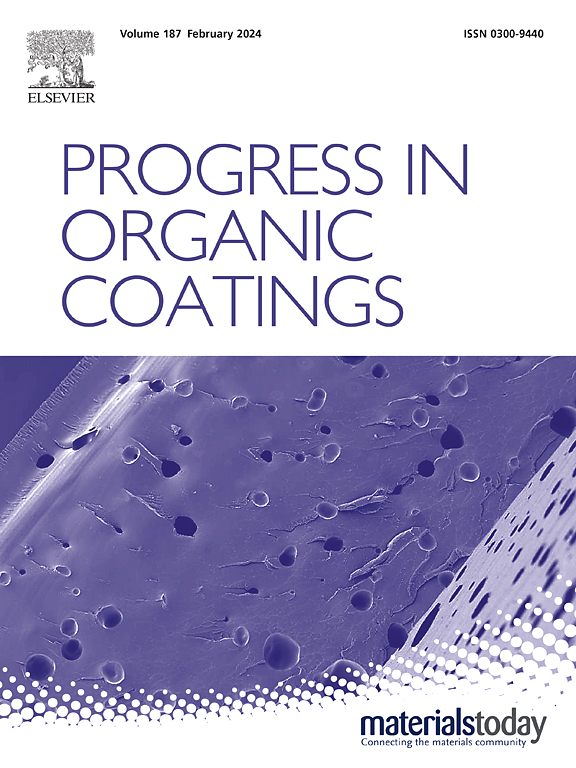A layer-by-layer coated highly conductive cotton fabric combining with superhydrophobicity, photothermal property, UV shielding, and temperature sensing
IF 6.5
2区 材料科学
Q1 CHEMISTRY, APPLIED
引用次数: 0
Abstract
Multifunctional composite fabrics combining exceptional water repellency with synergistic performance benefits are emerging as promising candidates for next-generation applications. This study reports a rationally designed superhydrophobic cotton fabric with robust stability and high conductivity, fabricated through sequential layer-by-layer deposition of poly(3,4-ethylenedioxythiophene):poly(styrenesulfonate) (PEDOT:PSS), pen ink, polydimethylsiloxane (PDMS), and silica nanoparticles (SiO₂). The developed fabric achieves superhydrophobicity (water contact angle 155.3o ± 3.0o), enhanced electrical conductivity, photothermal properties, UV shielding capability (UV blocking rate > 99.993 %), and temperature sensing functionality. These multifunctional properties demonstrate quantifiable performance in self-cleaning, Joule heating, solar-assisted water evaporation, UV blocking, and temperature detection. Notably, the fabric maintains superhydrophobicity under harsh conditions including acidic/alkaline solutions, UV irradiation, and water impact. Furthermore, the modified fabric exhibits excellent stability after repeated electrical heating cycles. The multifunctional synergy on cotton fabric establishes a viable approach for engineering multifunctional superhydrophobic textiles with tailored performance, addressing the growing demands for advanced materials in intelligent fabric innovation.
一种具有超疏水性、光热性能、紫外线屏蔽和温度传感功能的多层涂层高导电性棉织物
多功能复合织物结合了优异的防水性和协同性能优势,正在成为下一代应用的有希望的候选者。本研究报告了一种合理设计的超疏水性棉织物,具有强大的稳定性和高导电性,通过连续层层沉积聚(3,4-乙烯二氧噻吩)、聚(苯乙烯磺酸盐)(PEDOT:PSS)、钢笔墨水、聚二甲基硅氧烷(PDMS)和二氧化硅纳米颗粒(SiO₂)来制备。开发的织物实现了超疏水性(水接触角155.30±3.00),增强了电导率,光热性能,紫外线屏蔽能力(紫外线阻挡率>;99.993%),以及温度传感功能。这些多功能特性在自清洁、焦耳加热、太阳能辅助水蒸发、紫外线阻挡和温度检测方面表现出可量化的性能。值得注意的是,这种织物在酸性/碱性溶液、紫外线照射和水的影响等恶劣条件下仍能保持超疏水性。此外,经过多次电加热循环后,改性织物表现出优异的稳定性。在棉织物上的多功能协同作用为定制化的工程多功能超疏水纺织品提供了可行的途径,满足了智能织物创新对先进材料日益增长的需求。
本文章由计算机程序翻译,如有差异,请以英文原文为准。
求助全文
约1分钟内获得全文
求助全文
来源期刊

Progress in Organic Coatings
工程技术-材料科学:膜
CiteScore
11.40
自引率
15.20%
发文量
577
审稿时长
48 days
期刊介绍:
The aim of this international journal is to analyse and publicise the progress and current state of knowledge in the field of organic coatings and related materials. The Editors and the Editorial Board members will solicit both review and research papers from academic and industrial scientists who are actively engaged in research and development or, in the case of review papers, have extensive experience in the subject to be reviewed. Unsolicited manuscripts will be accepted if they meet the journal''s requirements. The journal publishes papers dealing with such subjects as:
• Chemical, physical and technological properties of organic coatings and related materials
• Problems and methods of preparation, manufacture and application of these materials
• Performance, testing and analysis.
 求助内容:
求助内容: 应助结果提醒方式:
应助结果提醒方式:


